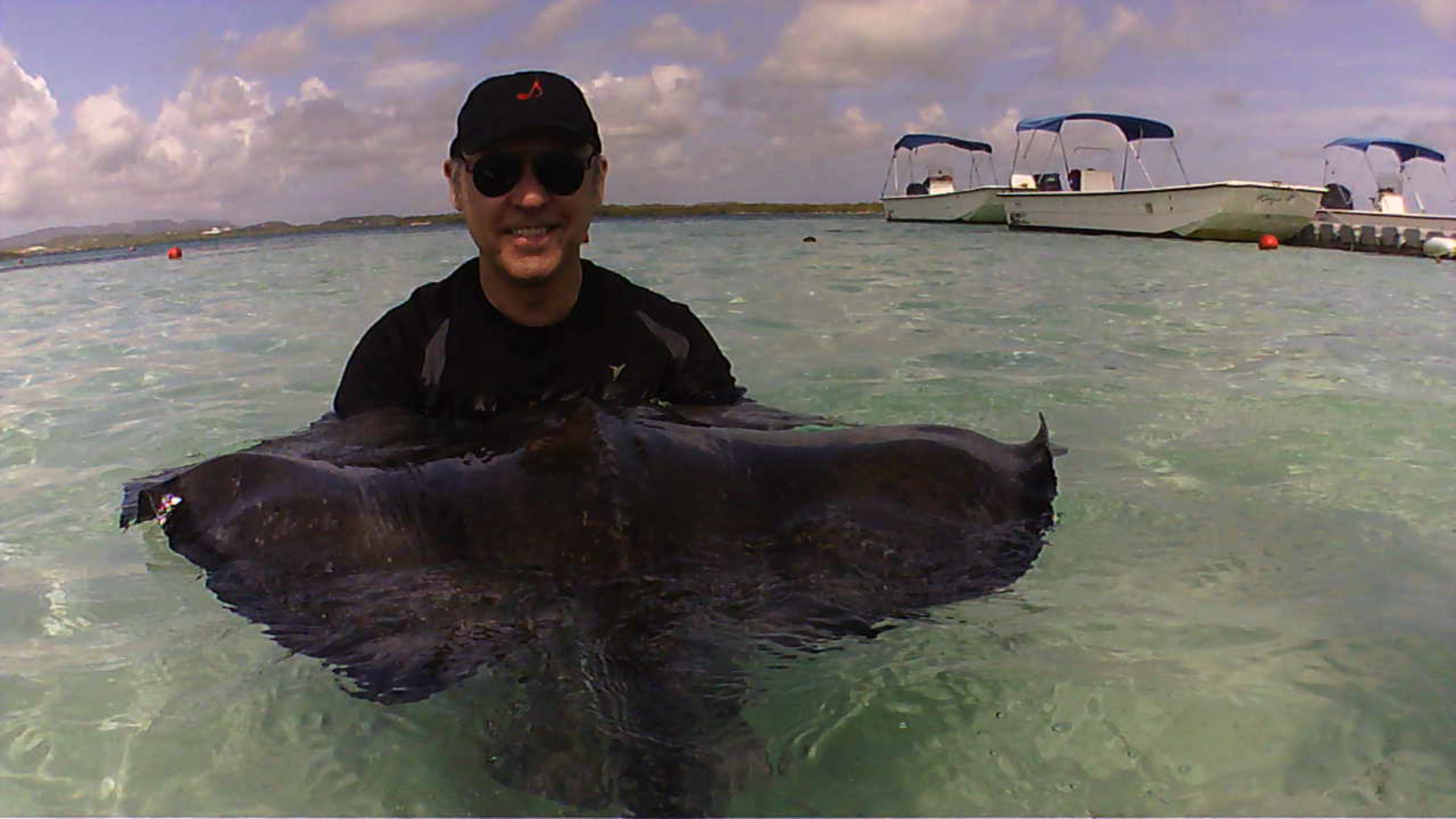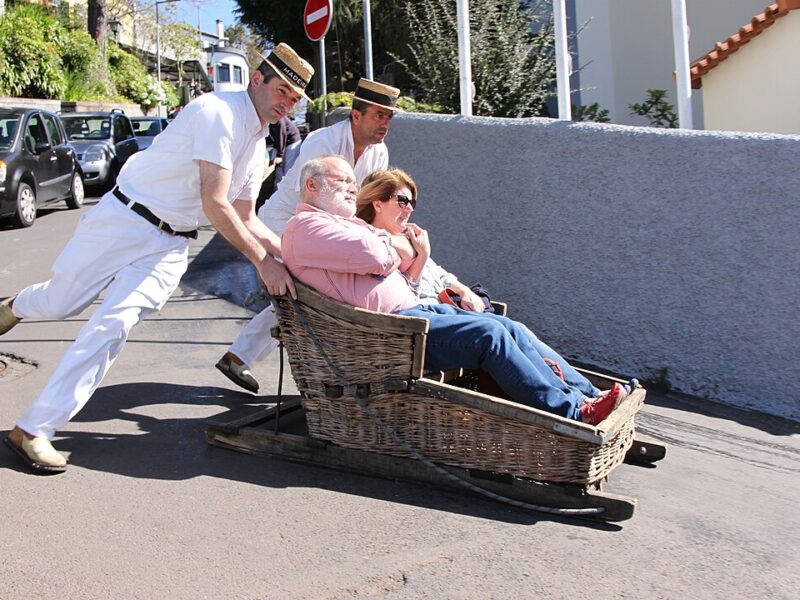The first thing they teach you about feeding stingrays by hand at Stingray City in Antigua is to make sure your thumb doesn’t stick up or else they’ll try to suck it into their mouths.
While a ray’s mouth isn’t strong enough to rip a digit off of your hand, the powerful suction they are capable of can be alarming if you’re not ready for it and more than a few tourists have gone home with “stingray hickeys.”
Stingray City was founded in eastern Antigua 24 years ago near the village of Seatons by the late Andrew Moody-Stuart who modelled the popular tourist attraction after a similarly-named operation in the Cayman Islands.
The other thing they warn you about is the ray’s venomous barb although perhaps reassure is a better choice of words as the chances of being stung by a southern stingray’s tail are vanishingly remote and the venom they contain is not fatal, although it is very painful. Because the barb is a defence mechanism that is designed to deter predators from attacking it from behind the only way to be stung by one is to forcefully strike the barb with your hand or foot.
Our guide, Clarence Fredererck, has been ferrying tourists out to the sandbar they call Stingray City for 19 years. He admits that despite their reassurances, some visitors are reluctant to get too close to the rays.
“Some of the people who come here are afraid to get in the water, but after a while, they get in and when it’s time to go, they are the ones that don’t want to leave,” he said.
Fredereck added that the staff at Stingray City hand out 60 pounds of squid every day to the 30 or 40 stingrays that congregate here, most of which are the larger females, even on days when the weather is too rough to bring guests. He says that the rays have been conditioned by the sound of their motor boats to know that when they hear them, it’s feeding time.
At Stingray City, guides bring tourists out to their two floating docks 364 days a year. The only day they don’t is the day of their annual staff party. There are slow and busy seasons said Fredereck and things can get hectic if there are multiple cruise ships docked in the capital, St. John’s, but it never feels too crowded.
The day we were there was perfect. The sky was a stunning blue and flecked with billowy clouds hovering over a turquoise sea. There were just four of us and we hopped off the floating dock to wade in the shallow waters of the sandbar.
Swarming around us was a multitude of rays. We marvelled as they swam by, their elegant wings slowly flapping like underwater bats. Hoping that we had food, they would bump into us looking for a snack and not react if we reached out to touch them. They were slick and soft and pleasant to feel. Some of them are so domesticated that the guides picked them up to pet them. Visitors are encouraged to do the same and pose for a photo.
“The more relaxed you are, the more relaxed they are. They’ll even fall asleep in your hands,” said Fredereck who said that the guides recognize many of the fish and have even given them names like Lulu, Sugar and Love Sponge.
View this post on Instagram
As for feeding them, the process is pretty simple. You grab a squid from a bucket, hold it in your hand with your thumb tucked under and present it to the rays which quickly sense it and suck it out of your hand in an instant like the world’s most powerful vacuum cleaner. More than once, a stingray mistook the underwater camera I was carrying as something to eat and would place it in its mouth before rejecting it as something inedible.
We grabbed some masks and snorkels to observe the rays underwater and saw numerous other schools of fish like sergeant majors who came to feast on the leftovers.
While feeding rays is an enjoyable experience for tourists, some scientists wonder if the practice is harmful to the animals. The Guy Harvey Research Institute at Nova Southeastern University in Florida is undertaking an ongoing study to observe the effects but has so far not published any results advising against the practice.
The study is important because stingray feeding is not unique to Antigua. You can feed rays as far away as New Zealand and other marine attractions like Discovery Cove in Orlando, Florida or the Shedd Aquarium in Chicago.
Before leaving Stingray City, we enjoyed an additional experience on nearby Laviscounts Island, which is home to an Aldabra tortoise sanctuary. Originally from the Indian Ocean, these friendly and curious animals can grow to over 600 lbs and live to up 200 years. Visitors can feed them and standing in their enclosure as the massive animals slowly lumber towards you feels a bit like being in a zombie movie. The sanctuary is also home to several other orphaned animals like parrots and cockatoos, but more importantly, you can also see a Lesser Antilles Iguana, a species that has become extinct on the island and one they are hoping to reintroduce.
To find out more about Stingray City, visit https://discoverantiguabarbuda.com/stingray-city/.
DON’T MISS: Enjoy the good life by visiting these 10 great Antigua and Barbuda attractions
- The author was the guest of Visit Antigua and Barbuda which did not review or approve this article before publication.


